HOW YOU GET TO YOUR DESTINATION CAN MAKE ALL THE DIFFERNCE
Where are you going on your next adventure travel? How far away is it? What should you pack? How much time do you have? These are all good questions whether you’re an adventure traveler, a weekend vagabond, or even a bugout prepper. Just as critical is answering the question of how you’re going to get there – your modes of transportation.
BE AN INDEPENDENT TRAVELER
Regardless of how I travel or where I’m going, I like to remain as self-reliant as possible. That entails a lot of things: having a topo map and compass to keep from getting lost when traveling off pavement; ensuring I have the proper tools to change a flat tire on the side of an interstate highway; having a backup plan if a flight is cancelled.
But being self-reliant is not just about being equipped to handle unexpected obstacles. It’s about being independent to make decisions as you travel. You can take that side trail to the scenic waterfall. Get off at the next exit to see the world’s largest wind chimes if you feel so compelled. You can spend more time at a location you are enjoying without worrying about catching the tour bus that’s on a schedule to get to the next stop and photo op.
So let’s look at some of your adventure travel options:
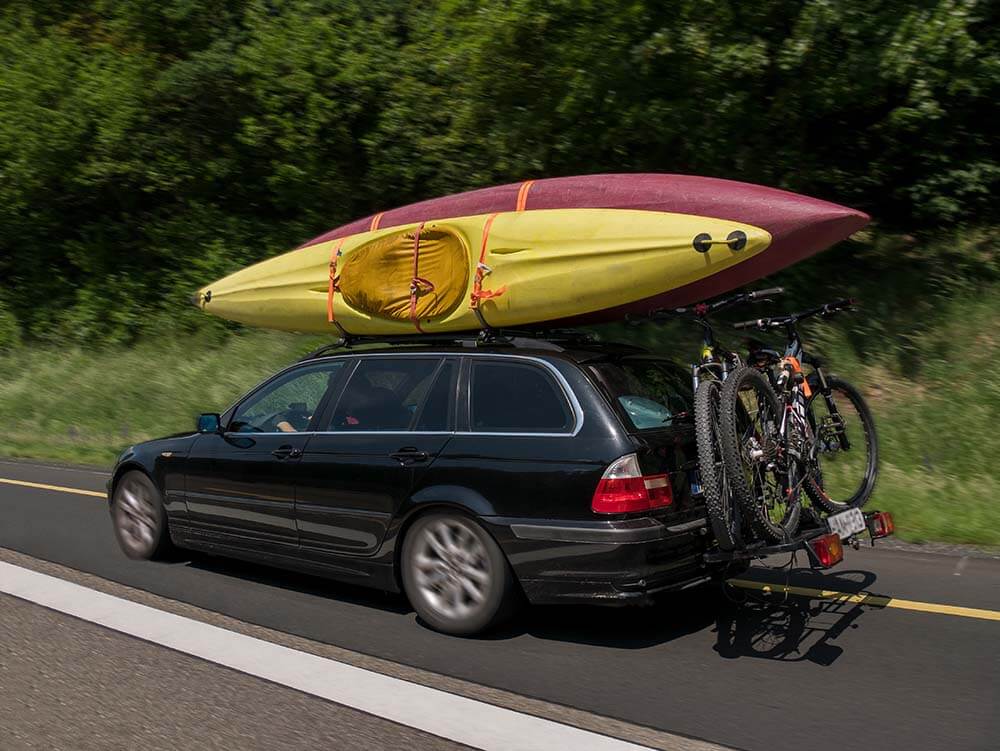
PUBLIC TRANSPORTATION
Obviously, you’re least independent when you’re using public transportation. You’re locked into their prices, their schedules, their stops and destinations. And it’s the luck of the draw when it comes to who might be sitting next to you. There’s the hazzle of the security gauntlet too, especially if you’ve forgotten about the pocket knife or that loose pistol cartridge that’s hiding in the bottom of your pack.
If you’re going on a vacation, those things can be mere inconveniences. If it’s an emergency and you’re fleeing such things as blizzards, hurricanes, or wildfires, you might find that tickets are sold out, that flights are cancelled, or that public transportation is shut down altogether.
Those who live in crowded urban centers (a poor decision, by the way) may have no choice but to start out with public conveyance. The same is true if there’s an ocean between you and your destination. If either is the case, change modes of transportation as soon as you arrive at a place where you can rent a car, buy a bike or shoulder a pack.
In an emergency evacuation scenario, beat the crowds and leave before things get critical. And your first stop after disembarking from public transportation should be someplace where you can properly outfit yourself with the necessary self-reliance gear that you were prohibited from carrying when you started your journey.
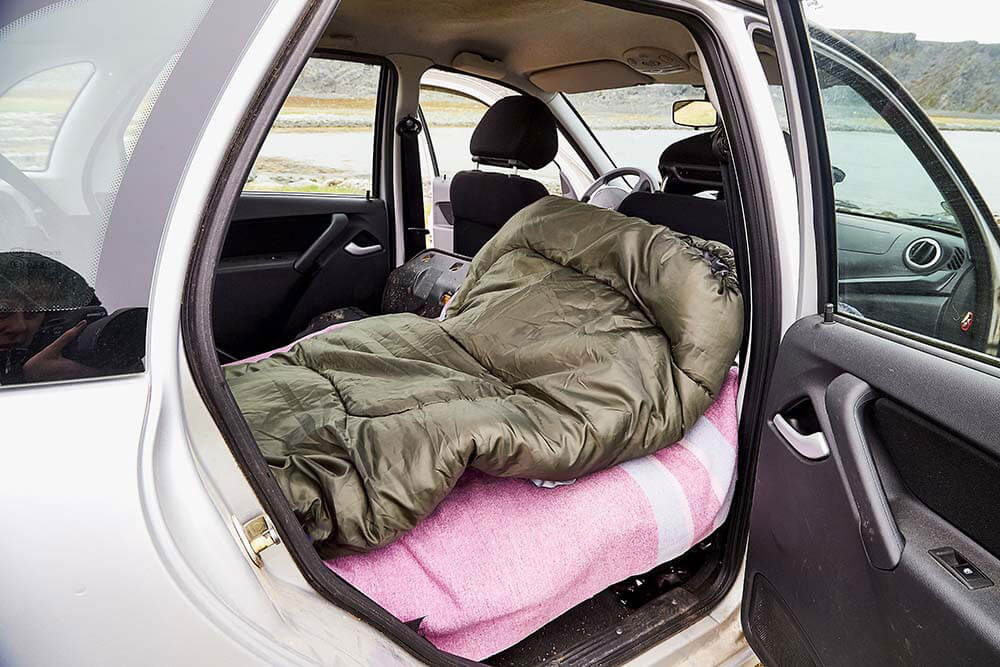
MANY BENEFITS OF TRAVELING BY CAR
Traveling by car allows good range capability. I travel many miles by car each year and have found that I can cover up to 1,000 miles in a day if necessary. When traveling by car, you have the ability to make decisions continually; you can alter your route or make unplanned stops.
I tuck a tool kit next to my spare tire. There’s always daypack in my car too with basic hiking, camping, and survival gear. So, if I want to stop for an impromptu hike, I’m ready. If a mechanical breakdown on a desolate dirt road means spending the night, I can still cook a meal and sleep without freezing to death.
Speaking of sleeping, I have an inflatable air mattress especially made for my compact SUV. Push up the front seats, drop down the rear seats and I can turn the whole rear of my car into a bedroom. I’ve slept there in remote areas when I didn’t want to set up a tent in a rain or snow storm.
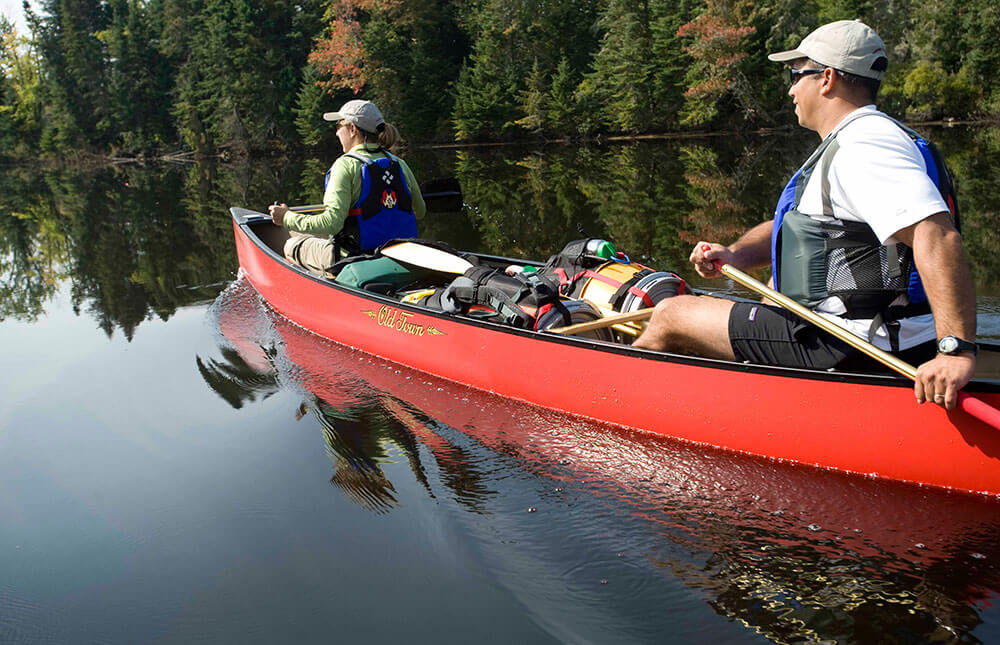
I’ve slept comfortably too in dark corners of highway rest areas for a few valuable hours when trying to do so by reclining the driver’s seat would have meant a strained neck and very little rest. In the morning, I brew my own coffee right there at the rest area using either a homemade or commercially available backpacking stove.
When you pack wisely, most cars have enough cargo capacity for all of your adventure travel or emergency evacuation needs. I’ve insisted on a roof rack (with crossbars please) on just about every vehicle I’ve owned. It’s a place to mount a canoe, kayaks or to strap on a soft-sided cartop carrier for bulky items such as sleeping bags and a tent.
By car, you can access jumping off points where you can continue by other modes of transportation. Park at a trailhead, a bike path, a river or lake and you’re ready to continue your journey.
GRAB A PADDLE AND GO BY CANOE
Canoes and kayaks make excellent transportation alternatives. Early in our nation’s history, waterways were the highways. Rivers, canals, and connected lake systems can provide excellent routes to get from Point A to Point B.
Canoes and kayaks have several advantages: they have relatively inexpensive purchase prices; it’s easy to learn to operate them; they require no fuel and little maintenance; and they can be mounted on a car, so they’re portable too. Add a set of strap-on wheels and you can move your canoe or kayak wheelbarrow style to portage them between nearby bodies of water.
PEDAL POWER: JOURNEY ON A BIKE
I’ve always viewed bicycles as one of my favorite ways to travel. In many countries, they are the only affordable option. Beyond the initial purchase price, it costs little to keep a bicycle operational, and, of course, there are no fuel costs.
I always thought it curious in the U.S. how many people will pay for a gym membership to ride a stationary bike or they’ll go for a fitness ride, but wouldn’t dream of taking a bike to do errands around town. I’ve always viewed bicycles as being for transportation first, for leisure, scenic or stress-relieving recreational rides second, and for exercise benefits a very distant third.
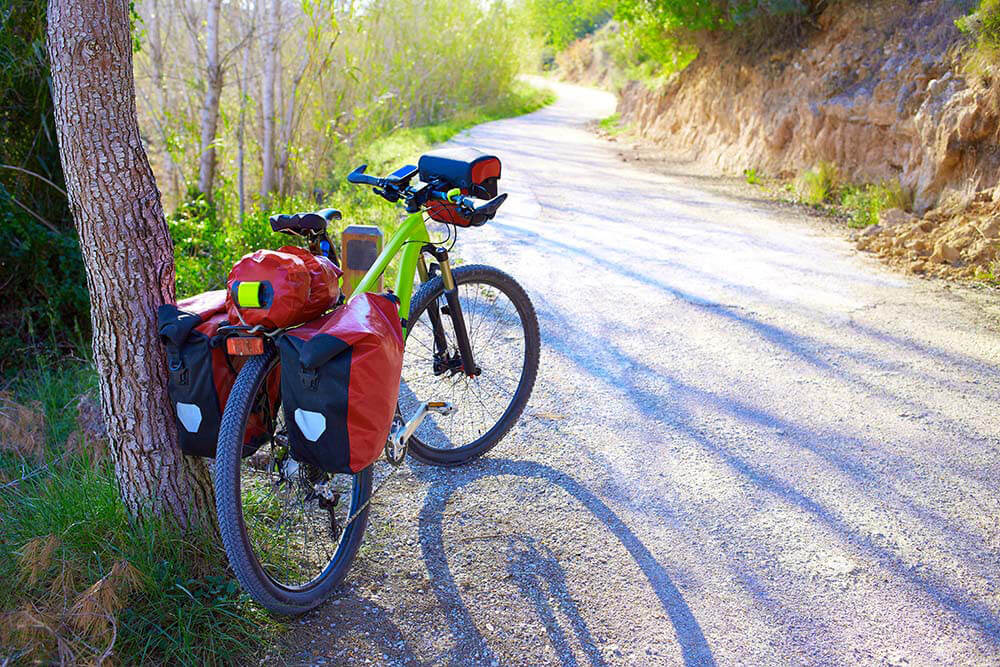
Range capabilities are more limited than with other mechanized types of transportation, but still much better than hoofing it. Unless you’re traversing very formidable terrain, it’s not unreasonable to expect to cover 50 miles in a day with a loaded touring bike without killing yourself doing it. That’s assuming you’re in appropriate physical condition.
Dedicated riders on a lightweight road bike not burdened by gear can cover twice that distance. Want to beat the traffic? More dedicated bike paths are being created every year, many along old railroad routes.
Cargo capacity is more limited with a bicycle, so you’ll have to choose your equipment carefully with an eye toward keeping both bulk and weight to a minimum. Another benefit of the bicycle is that they’re portable. If you come to a hill you can’t climb, get off and walk it up, no judgements here. If you come to an obstacle on a trail, pick it up and carry it over or around. And if you have a long way to go, mount a bike rack on your car (I like the tow-hitch type) and take the bike with you.
For those concerned with preparing for an emergency, if your car breaks down, runs out of gas or the road is blocked, switch to the bicycle and you can still cover some miles.
There are many good brands of bicycles on the market. Choose one that fits you and the terrain you’ll be covering. Touring bikes are designed to carry heavy loads of gear across many miles. My touring bike is a model no longer made by Jamis. If I was buying one today, I’d check out the Disc Trucker from Surly Bikes. My mountain bike is an old model from Specialized.
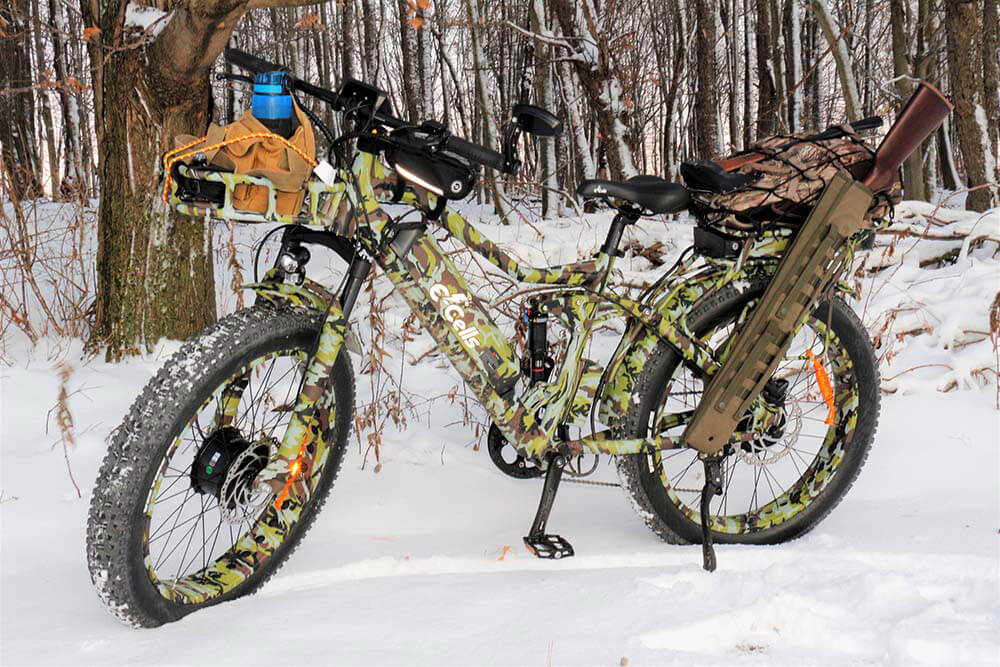
I’ve always tied down bags and packs as a precaution in the event of capsizing when camping by canoe. I use dry bags too to keep gear dry. The ones I have now are made by Frogg Toggs, which also makes excellent rain gear. When shopping for a canoe or kayak, I always begin my search with Old Town.
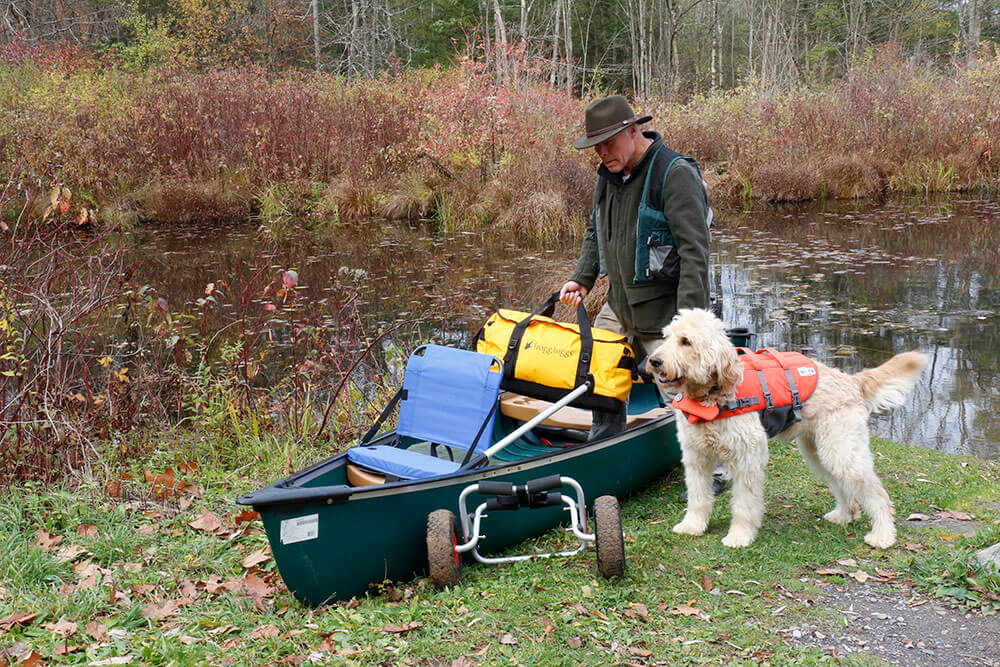
ON FOOT IS MORE THAN A PEDESTRIAN WAY TO TRAVEL
As soon as you get out of bed or turn off the TV and get off the sofa, guess what? You’re traveling by foot. However, realizing the full potential of walking is up to you. While you’re limited in the distance you can adventure travel in a given day – figure about 20 miles – there’s great freedom in walking.
It’s the most economical – there are no wheels to buy, no engines to fuel and maintain. And you’re not limited by the terrain. You don’t need a road or even a trail. Choose the proper pack, the right boots, carry the essentials, and you’re traveling and living at the most basic and often most rewarding level. And I guarantee that you’ll see more along the way.
WEIGH YOUR OPTIONS
Yes, how you travel will depend on where you’re going, how far away it is, the time you have, and what you’re going to bring with you. But you still have options that you should consider seriously if you want to get the most out of your adventure travels. For those preparing for possible evacuation in the face of an oncoming catastrophic event, choosing how you travel could be a matter of whether you make it out of the danger zone or not.
My choices are clear. Look up. See that commercial jet flying overhead? I’m not in it. I’m the guy driving down the road in his compact SUV with the kayak on top, the bicycle on the back, and the daypack on the passenger seat.
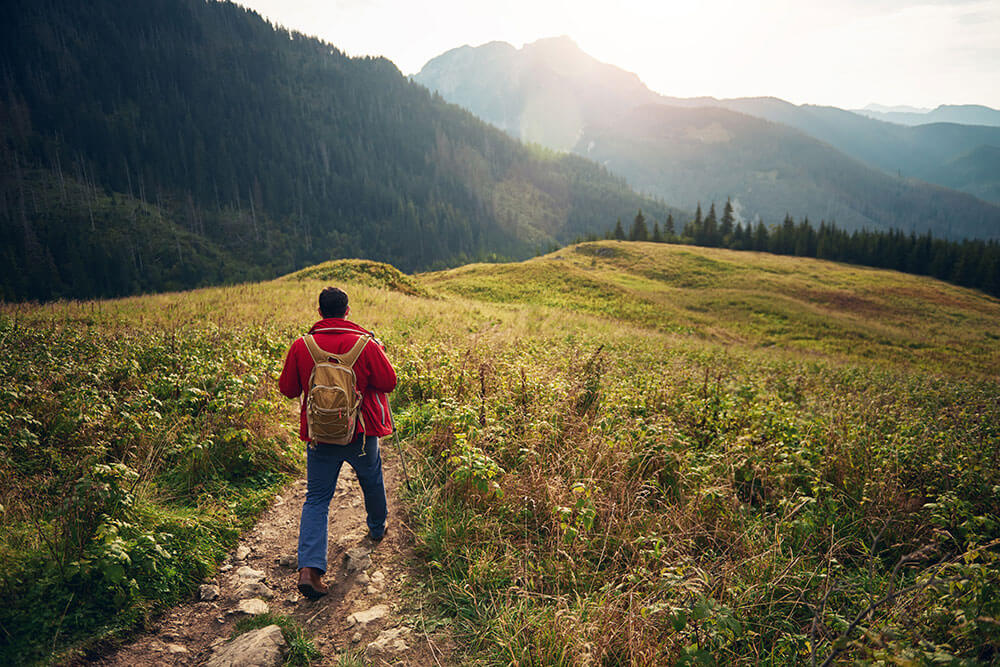
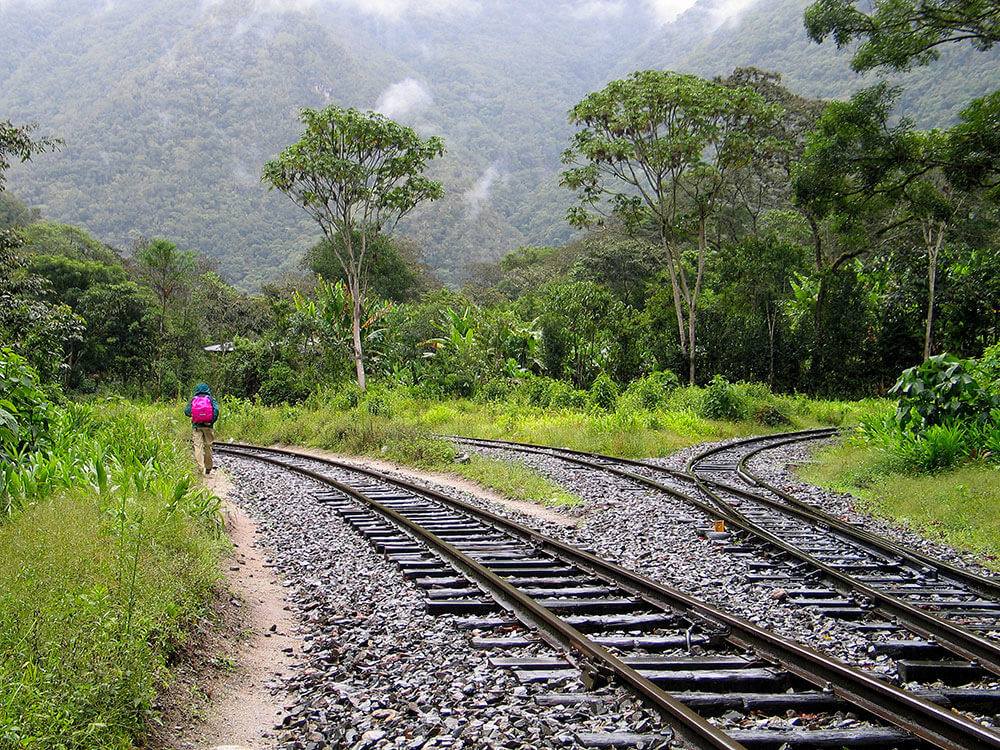
STEER TOWARD THESE ADVENTURE TRAVEL TIPS
Here are a few suggestions to consider when you’re traveling by car:
Tuck away some tools
And know how to use them. During my time as a police officer I came across many stranded motorists who didn’t have so much as a jack or a lug wrench in their cars or didn’t have a clue how to change a flat tire, one of the most common roadside problems.
Carry an emergency kit
Mine is a daypack filled with camping and survival gear that I can also use for impromptu hikes. It allows me to cook a meal, purify water, build a fire, and stay warm and dry. I can grab this and go too if I have to abandon my vehicle for some reason. In the winter, I extend the kit with another bag that contains blankets, extra gloves and hat, folding shovel, tow rope and more.
Bring your own food
I’ve done this on my last couple of cross-country trips after I found a steady diet from fast food restaurants was making me feel lousy. You can keep it simple with cheese and crackers, apples, cans of soup, and, yes, even peanut butter and jelly. I make my own coffee too. You’ll be surprised how much money you save in the process too.
Piggyback alternate travel methods
Whenever possible, I mount a bicycle on the back of my car and often a kayak on top. In the winter, consider including cross-country skis or snowshoes.
Pack an atlas or maps
Yes, those old-fashioned paper things. Maps give you alternate ways to navigate. Recently, my phone’s GPS map program insisted that I adventure travel directly into the path of a nasty winter storm. I found an alternate, more southern route with my atlas and together with regularly using my phone to check the national weather map, I was able to stay out of the storm’s path and had clear, dry roads most of the way.
Follow a story to stay awake
I’ve found that on long drives, listening to audio books or the classic radio channel on satellite radio helps to keep me alert as I listen to the dialog and follow the plot of the story.
SOURCES
Old Town Canoes
www.OldTownCanoe.com
Frogg Toggs
www.FroggToggs.com
Surly Bikes
www.SurlyBikes.com
Specialized Bicycles
www.Specialized.com
A version of this article first appeared in the March 2022 issue of American Outdoor Guide Boundless.

